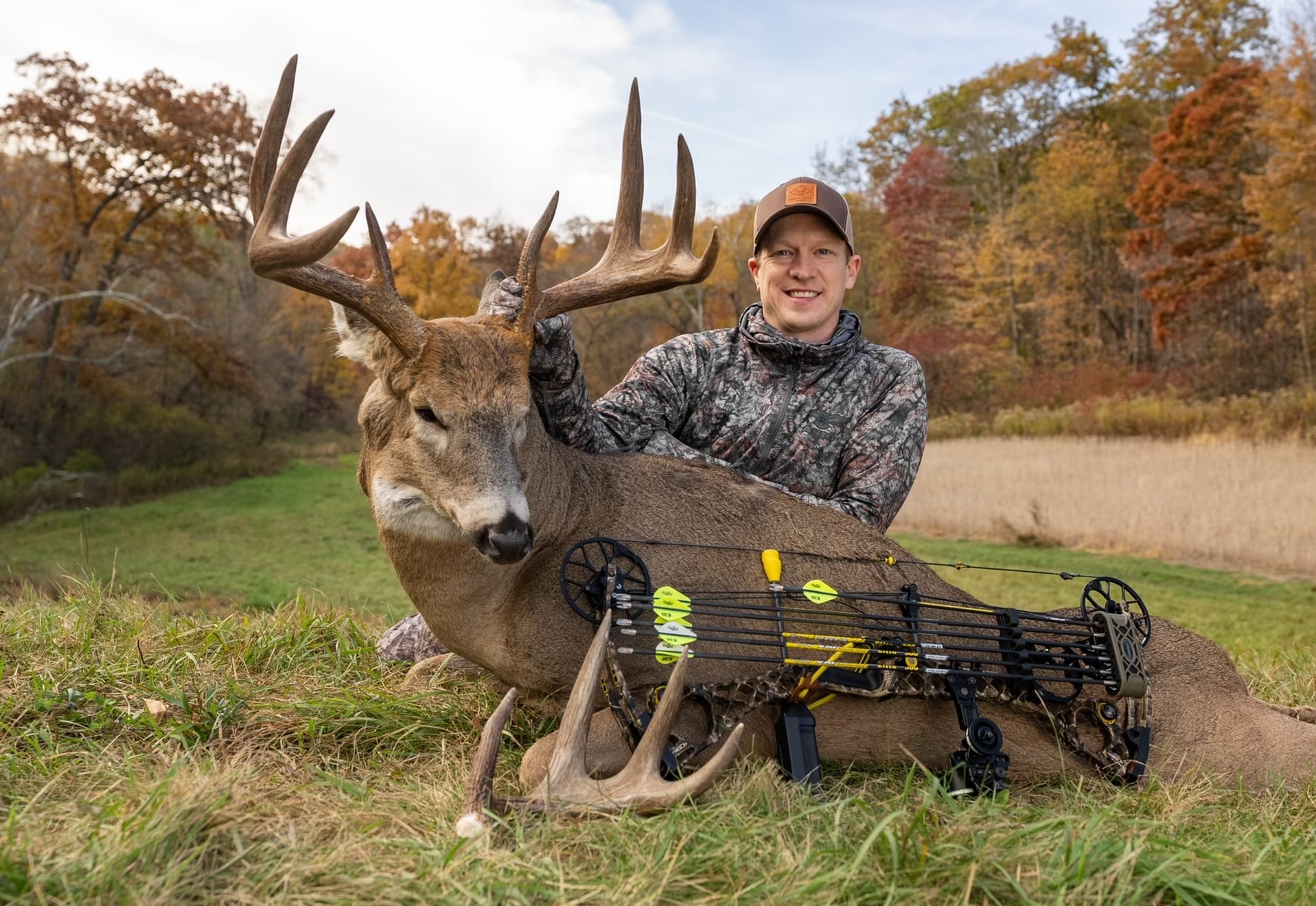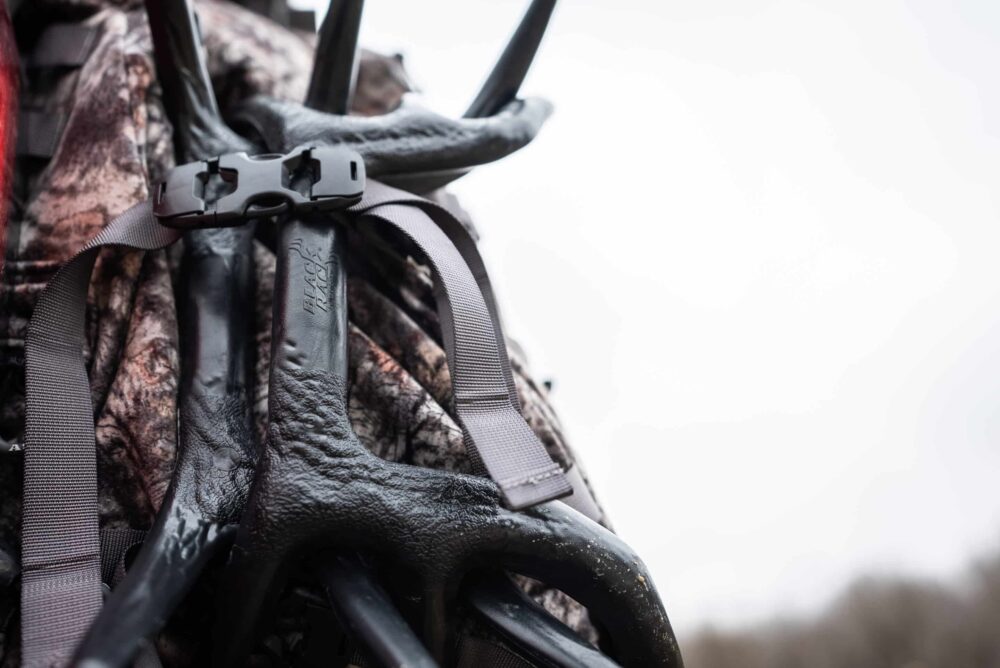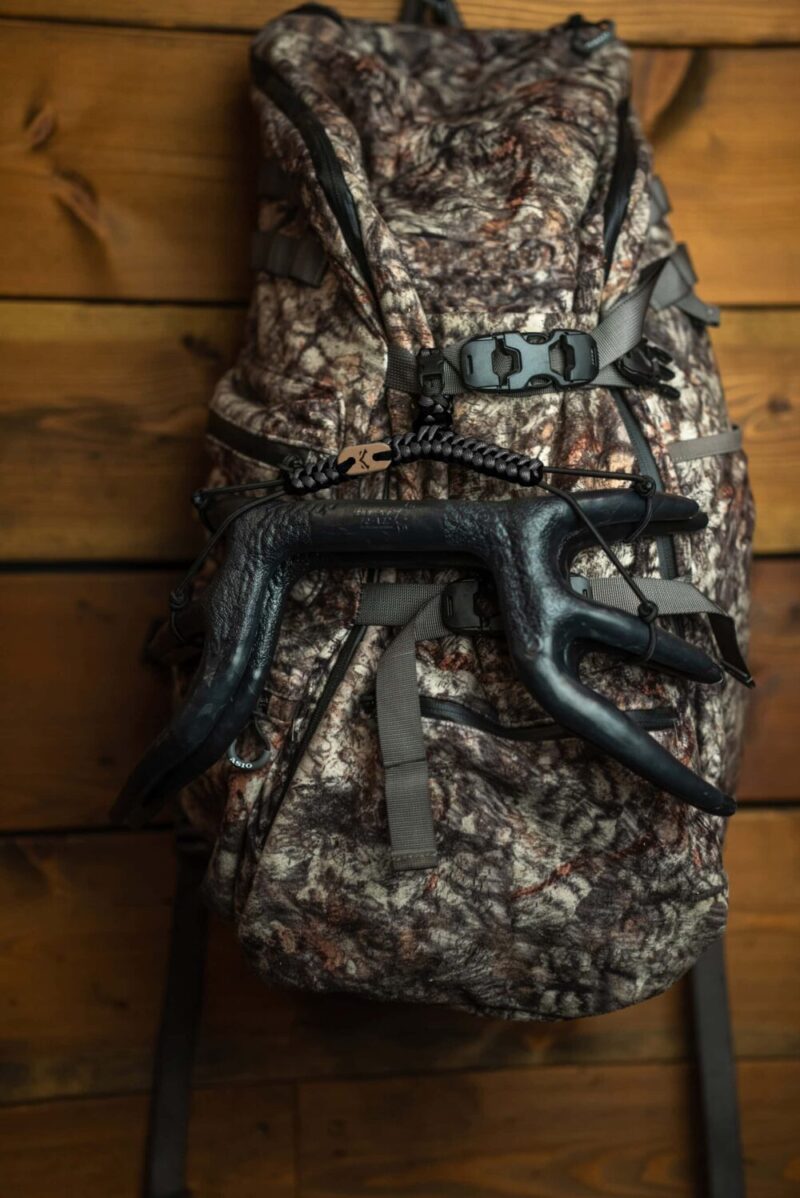Thanks to some light rattling, a big buck was on its way.
The 4.5-year-old 10-point with a kicker had snuck by Minnesota hunter J.J. Dukart on Oct. 4, 2017. “He bypassed where I was and was walking away,” he said. “He had no reason to come back. The only real option I had was to do communication (calling strategies).”
Dukart said the buck heard the light buck grunts and contact grunts he made, but didn’t react. He quickly switched tactics and started rattling behind his back to ensure the buck didn’t see his movements and to deflect the sound further behind him. “He heard the sparring, circled back around me and presented a 20-yard shot,” Dukart said. “A lot of people think rattling doesn’t work, but it is an effective tool throughout the season; you just need to change your tactics to make it natural and real.”

Dukart gives his testimony as to why antler rattling works. Photo Credit: J.J. Dukart
Dukart, 36, started bowhunting in high school. He loves how archery hunting forces hunters to think about every detail and draw deer in close for a “next-level experience.” Rattling has been a part of his bowhunting strategy for a long time, and he firmly believes in its effectiveness. As the vice president of media at Illusion Outdoors and a member of the Illusion Deer Society, Dukart has also heard and seen multiple rattling success stories.
“Rattling antlers are one of those things,” he said. “When you don’t have them, you feel naked and put yourself at a disadvantage. If you do have them, you don’t have to use them, but if you don’t, you’re missing an element of a potentially great hunt.”
Regarding deer communication, Dukart said grunt and bleat calls are a tight, closing communication strategy, whereas rattling is a long-distance tactic. He believes calls are typically more effective — but when rattling does work, it elicits intense reactions from aggressive bucks, giving hunters the best adrenaline rush. Together, antlers and calls pack a good “one-two punch,” Dukart said. Below, he shares his tips, tactics and thoughts on rattling antlers.

The dark black color of the manufactured antlers helps with concealment. Photo Credit: Illusion Outdoors
Dukart said you have to get into a buck’s mind and think about what he wants and what he’s thinking at that point in the season to be effective with rattling antlers. Here’s how to adjust your presentation as the season carries on.
Dukart likes using manufactured antlers for many reasons. To top his list, shed antlers age and dry out over time, reducing the sound quality they produce. In contrast, synthetic antlers produce reliably consistent sounds that maintain a crisp pop when rattled together. Dukart uses the Black Rack by Illusion Outdoors. The system simulates two full racks clanking together, as opposed to the half racks of two sheds.
The Black Rack is also black, not white like shed antlers, which helps with concealment. Dukart also likes that the system is compact and stacks nicely for carrying. While shed antlers may be free to find and use, manufactured antlers are a worthwhile investment.

The Black Rack Silencer is a secure why to tie the antlers to your bag and minimize noise. Photo Credit: Illusion Outdoors
For more buck communication and calling strategies, read these articles:
Calling Tactics for Rut-Crazed Whitetails
Calling Strategies for Elk, Deer and Turkeys